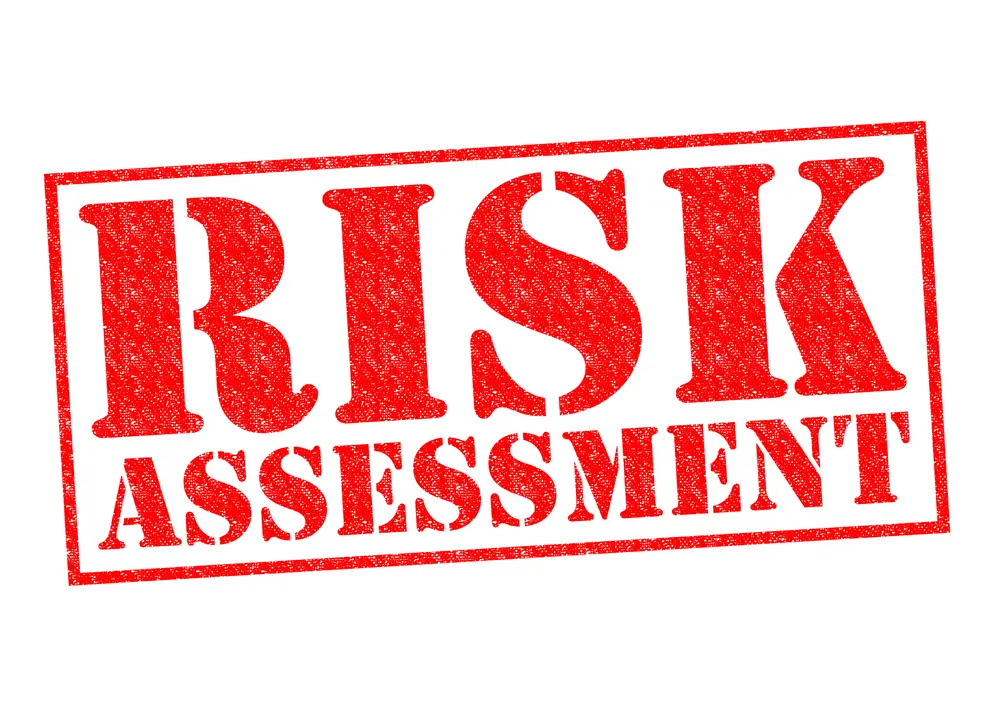Risk assessment programs are fundamental components within the framework of effective organizational management and risk management programs.
They offer a systematic approach to identifying, evaluating, and prioritizing potential risks that could undermine the achievement of organizational objectives.
This article delves into various aspects of risk assessment programs. It explores different types of risk assessments, highlighting their unique characteristics and applicability in diverse contexts.
Furthermore, it discusses potential hazards and risks, emphasizing their impact on an organization’s operations and overall performance.
The intricacies of the risk management process are also dissected, providing insights into the strategic approaches employed to mitigate identified risks. Lastly, the article provides a roadmap for implementing a risk assessment program, considering the critical steps and components that ensure its efficacy.
This article provides a thorough exploration of risk assessment programs, to improve understanding and promote their effective use in organizational settings.

Overview of the Risk Assessment Program
The Risk Assessment Program functions as a systematic and comprehensive process designed to identify, evaluate, and manage potential risks that could hinder the achievement of an organization’s objectives.
This comprehensive risk assessment program involves meticulously examining potential hazards, their likelihood, and the severity of their potential impact.
The risk assessment process is strategic and detail-oriented, considering various risk assessment factors such as the nature, the risk level, and the potential consequences.
The core aim of this process is not only to manage risk but also to create a safe and secure operational environment.
Thus, the risk assessment program objectives pivot around proactive identification and mitigation of risks, thereby contributing to effective risk management and overall organizational success.
Types of Risk Assessments
Risk assessments can be classified into several types, each with its distinct objectives and methodologies.
Data-driven risk assessments, for example, harness statistical and computational techniques to predict future risks based on existing data, while health risk assessments focus on evaluating the potential hazards that could negatively impact an individual’s health, often incorporating family history as a significant determinant.
These assessments consist of major components, including hazard identification, risk estimation, and risk evaluation, and are often guided by legal requirements to ensure compliance with regulatory standards.
Data-Driven Risk Assessment
Harnessing the power of data analytics, data-driven risk assessment offers an innovative approach to identifying, predicting, and managing potential hazards, paving the way for a safer and more secure future.
This type of risk assessment uses historical and real-time data, predictive models, and machine learning to quantify potential risks.
- Data Collection: Gathering relevant data is the first step in the data-driven risk assessment process.
- Risk Identification: The collected data is analyzed to identify potential risks.
- Risk Assessment: Different risk assessment methods are used to predict the likelihood and severity of the identified risks.
- Risk Mitigation: A risk assessment and mitigation program is developed based on the risk assessment outcomes.
Data-driven risk assessment revolutionizes the traditional risk management process by providing actionable insights for decision-making.
Health Risks
In public health, data-driven insights play a crucial role in identifying and mitigating potential threats, thus safeguarding our well-being and longevity. Risk assessments include tests for the likelihood of developing specific health risks like cancer.
| Risk Factor | Health Risk | Assessment Method |
|---|---|---|
| Genes | Risk for cancer | Genetic testing |
| Family history | Risk for breast cancer | Medical history review |
| Lifestyle | Cardiovascular diseases | Lifestyle survey |
| Environment | Respiratory diseases | Environmental hazard assessment |
| Occupation | Occupational diseases | Workplace hazard assessment |
These assessments strategically employ data to provide a detailed analysis of each individual’s risk profile.
The human health risk assessment program is an analytical, detail-oriented, and strategic approach to understanding and mitigating potential health risks.
Family History
Family history is a significant determinant in evaluating the potential for certain health conditions, notably the likelihood of developing breast cancer. Comprehensive risk assessment services, utilizing a systematic risk assessment methodology, incorporate family history to provide individual risk assessments.
- Severity: An individual’s family history can reveal the severity of the potential risk, which is vital for risk management programs.
- Frequency: It can also indicate the frequency of a potential health condition recurring in a family lineage.
- Response: The risk assessment report, based on family history, aids in strategizing appropriate risk management activities.
Incorporating family history into risk assessment procedures enables a more strategic approach to preventive measures, leading to a more precise and detailed approach to managing health risks.
Major Components
Major components involved in health management are pivotal to understanding and addressing an individual’s possible health issues, offering a comprehensive approach to disease prevention and management.
A risk assessment program incorporates several critical components, including a risk assessment working group, risk matrix, risk rating, and risk score.
The risk assessment working group strategically identifies potential hazards, analyzes their impact, and develops a risk matrix.
The risk matrix further assists in quantifying the risks identified, assigning a risk rating and risk score.
These scores reflect the severity and likelihood of the risks, informing risk treatment measures.
The implementation of risk treatment measures and management of risk through risk management controls are integral for mitigating potential health risks, thus enhancing the effectiveness of the program.

Legal Requirements
Understanding the legal requirements is crucial in health management as they guide the formulation and implementation of policies and procedures to ensure patient safety and quality of care.
Legal, regulatory, and jurisdictional requirements form the regulatory framework for the risk assessment program. They stipulate the mandatory requirements that an institution’s risk management approaches must satisfy.
The risk assessment team leader is responsible for ensuring that the risk management policies, strategies, and actions comply with these requirements. Non-compliance can lead to penalties and damage the reputation of the institution.
Therefore, a comprehensive understanding of these legal provisions is fundamental to developing an effective institutional risk management strategy.
These requirements also influence decision-making, shaping the organization’s overall risk profile.
Potential Hazards and Risks
In the discourse on potential hazards and risks, it is pivotal to consider three key aspects:
- The level of risk is a quantifiable measure that evaluates the probability and severity of harm or loss that may occur.
- Protective equipment serves as a crucial barrier against such risks.
- Identifying and controlling hazardous conditions is vital for strategically mitigating potential threats.
Level of Risk
Assessing the risk level involved in any situation is critical to a comprehensive risk assessment program. This process involves identifying and analyzing various risk factors affecting the concerned entity.
An accurate risk assessment helps create an organisation’s robust risk management culture. The level of risk will typically be determined through detailed risk estimation processes, which may involve quantitative or qualitative methods.
The results of these estimations are usually documented in a risk description, clearly explaining each risk’s nature and potential impact.
These risks are then catalogued in a risk prioritization worksheet, which aids in systematically addressing the identified risks, thereby ensuring the strategic management of risks within the organization.
Protective Equipment
Utilizing protective equipment serves as a pivotal strategy in the mitigation of potential hazards, providing individuals and organizations with essential safeguards against various threats. Protective equipment is a critical tool used by a risk manager in achieving the objectives of risk assessment under hazardous conditions.
| Lab Safety Symbols | Corresponding Protective Equipment |
|---|---|
| Biohazard | Biohazard suit |
| Radiation | Lead apron |
| Chemical hazard | Chemical-resistant gloves |
| Fire hazard | Fire-resistant clothing |
| Electrical hazard | Insulated gloves |
This table illustrates some lab safety symbols and their corresponding protective gear, emphasizing the role of current risk control measures. The effectiveness of risk treatment increases with the strategic use of such equipment.
Thus, a rigorous risk assessment program demands the incorporation of appropriate protective equipment, underlining its significance in controlling and mitigating potential risks.
Hazardous Conditions
Hazardous conditions present unique challenges in various environments, requiring a comprehensive understanding of their nature and potential impacts to ensure effective prevention and control strategies.
The risk assessment program is a strategic tool for identifying workplace hazards and determining the product of hazard exposure. It scrutinizes the likelihood of exposure to hazards, such as hazardous material spills, which can lead to severe injury or even death.
The program further outlines preventive actions, minimizing potential harm and mitigating foreseeable emergency scenarios. These steps must be taken systematically, and detail-oriented, ensuring all potential risks are accounted for.
Thus, the risk assessment program provides a robust framework for understanding and managing hazardous conditions.
Risk Management Process
Risk management is crucial in identifying, evaluating, and prioritizing potential organisational threats, facilitating effective decision-making and strategic planning.
This process involves risk analytics to assess the risk environment and operational risks, which is essential for risk managers.
This intricate process consists of four essential steps:
- Risk identification: where potential threats and vulnerabilities that could negatively impact the organization are identified.
- Risk assessment: where the extent of the potential threats is evaluated using risk analytics.
- Risk treatment: where appropriate strategies and risk treatment methods are selected to mitigate the identified risks.
- Monitoring and review: where the effectiveness of the risk management process is analyzed and adjusted as necessary.
These steps ensure a systematic, analytical approach to managing entanglement risk, facilitating strategic decision-making and resource allocation within an organization.
Implementing the Risk Assessment Program
The implementation phase of the risk assessment program is a crucial stage that encompasses monitoring and continuous review for improvements.
It necessitates diligent oversight to ensure the program’s effectiveness in identifying, assessing, and mitigating potential risks.
Regular reviews and iterative improvements are instrumental in adapting to evolving risk landscapes and enhancing the program’s robustness and resilience.
Monitoring the Risk Assessment Program
Ensuring the efficacy of a risk assessment program necessitates continuous monitoring and regular updating of strategies to address evolving threats and vulnerabilities.
This is an ongoing process, requiring incident investigation techniques and the facilitation of risk assessments based on previous assessments and new information.
- Cumulative risk assessment involves a strategic, detail-oriented examination of the combined risks from multiple sources or processes to determine the overall risk potential.
- Investigation process: Effective incident investigation techniques are crucial to understanding past and preventing future failures. It provides valuable insights into areas needing improvement.
- Stakeholder preparedness review: Regular reviews ascertain the readiness of involved parties to respond effectively to identified risks. This ensures a proactive approach towards risk management rather than a reactive one.
Review and Improvement
Regular evaluation and enhancement of strategies are integral components of a successful monitoring system. This principle applies to the risk assessment program, which requires ongoing analysis to ensure its effectiveness.
The review process involves the application of corrective measures, which are formulated based on the findings of effective incident investigations.
These investigations provide crucial information for risk aversion strategies and contribute to the overall security risk assessment. Their results should be communicated thoroughly in the investigation to managers responsible for implementing changes.
This systematic review and improvement meet stakeholders’ expectations and ensure the program’s ongoing efficacy.
It allows for continuous adaptation to evolving risks, maintaining the organisation’s resilience.
Frequently Asked Questions
What are the costs associated with implementing a risk assessment program?
Implementing a risk assessment program entails costs such as training employees, hiring consultants, purchasing necessary software, ongoing maintenance, and potential disruption to regular operations during implementation.
How long does it typically take to implement a risk assessment program in an organization fully?
The duration for full implementation of a risk assessment program varies widely, dependent on the organization’s size, complexity, and specific needs. However, it typically ranges between several weeks to a few months.
Are specific industries or sectors benefit more from a risk assessment program?
All industries can benefit from risk assessment programs; however, sectors with complex operations or high-risk environments, such as healthcare, construction, finance, and energy, may derive greater advantages due to inherent operational hazards.
What training is required for staff to use the risk assessment program effectively?
Training for effective use of risk assessment programs necessitates understanding risk identification, evaluation methods, and mitigation strategies.
Staff must also acquire data analysis, decision-making, and communication skills to facilitate risk management processes.
How is the effectiveness of a risk assessment program measured over time?
The effectiveness of a risk assessment program is gauged over time through regular audits and evaluations, examining the accuracy of risk predictions, mitigation strategies’ success, and improvements in overall organisational safety and security.

Conclusion
In conclusion, organizations must implement a Risk Assessment Program as a proactive measure to identify and address potential hazards.
This step cannot be overlooked and must be taken seriously to ensure the safety and well-being of all individuals involved.
This systematic process, which includes various types of risk assessments, contributes significantly to risk management.
Implementing such a program is strategic, fostering a safer and more secure environment.
This, in turn, facilitates the achievement of organizational goals while minimizing potential setbacks.

Chris Ekai is a Risk Management expert with over 10 years of experience in the field. He has a Master’s(MSc) degree in Risk Management from University of Portsmouth and is a CPA and Finance professional. He currently works as a Content Manager at Risk Publishing, writing about Enterprise Risk Management, Business Continuity Management and Project Management.

